Similar patterns
Snowflakes are a classic example of symmetry.
Correlation a fascinating pattern of similarity, and this post will show you some most important and intriguing correlations in social media publishing: how social media engagement reflects on media publishers’ traffic that eventually turns into revenue?
Everybody knows correlation does not imply causation, and many of us are aware that the times when people drowned in pools correlate highly with the times when Nicholas Cage appeared in films. But when used in a proper context, correlation is a very clear and also intuitive way to show that a real correspondence exists. Facebook engagement, reach and traffic correlations are one such case.
We will show how the Facebook engagement (reactions, comments and shares) corresponds to link click patterns, and further to reach and traffic on the publisher’s site.
The general trend
There will always be those stories that bring a lot of of traffic but not so many Facebook reactions, shares or comments. However, it is easy to see from data that the general trend is different: news publishers’ Facebook engagement, reach and traffic reflect each other.
High Facebook engagement means high Facebook reach. More engagement means more traffic to the publisher’s site.
Here are our results from case studies on Nordic general news publishers.
First, the Facebook referrals data is highly similar to how traffic flows to the site. (Note that the scales for Facebook referrals and all web traffic are different – see the left and right axis values).
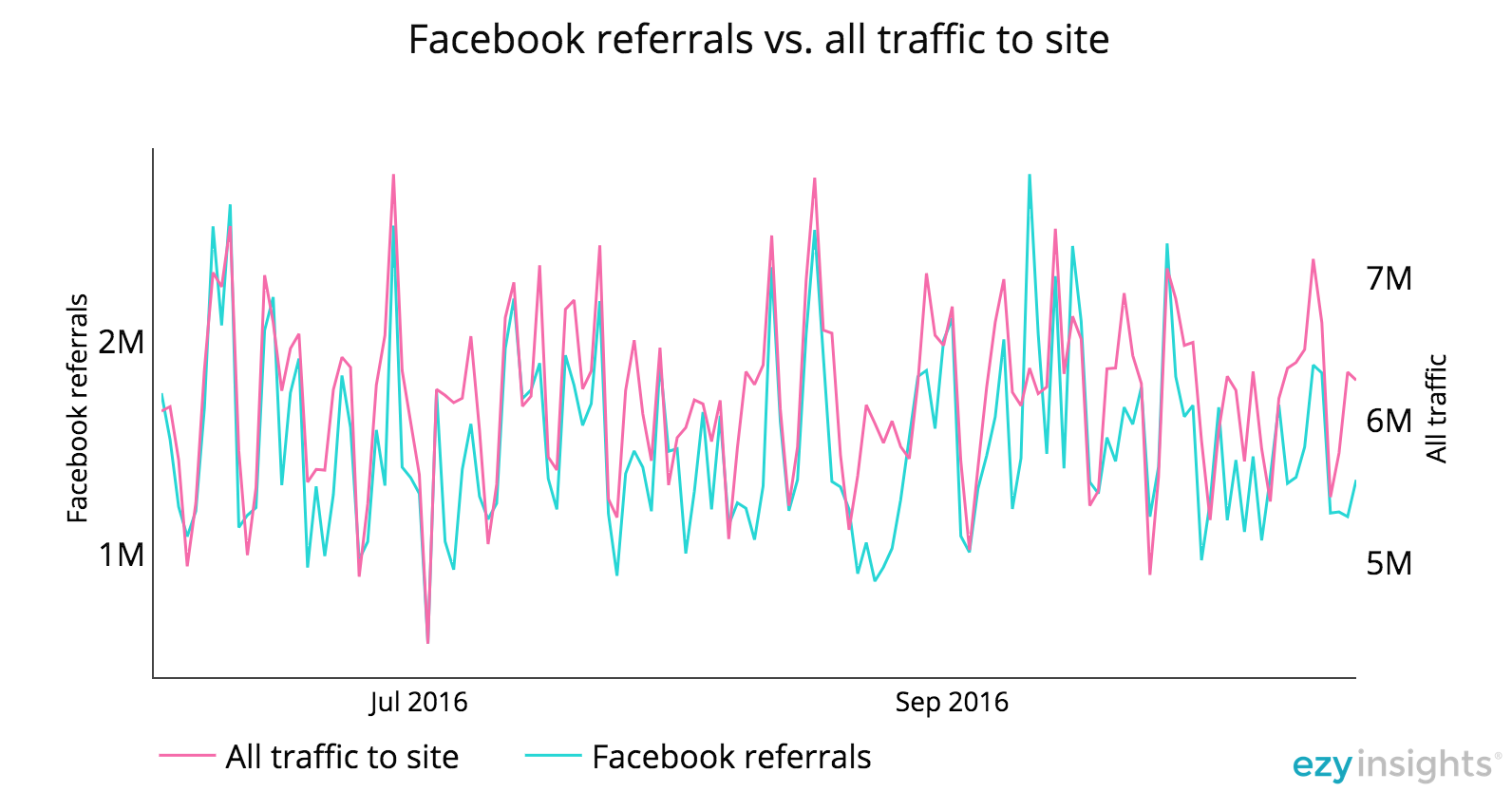
Facebook referrals’ growth predicts all web traffics’ growth. The correlation between all web traffic and Facebook referrals is very high, which means that when one of them goes up or down, the other almost always does the same. On the scale from -1 to 1, where -1 implies perfectly opposite directions and 1 perfect similarity, Facebook referrals’ and all traffic to the publishers’ site in our sample publisher’s traffic is 0.8.
Facebook engagement growth has a corresponding pattern to Facebook referral traffic growth. Even Facebook engagement reflects how all traffic to site develops.
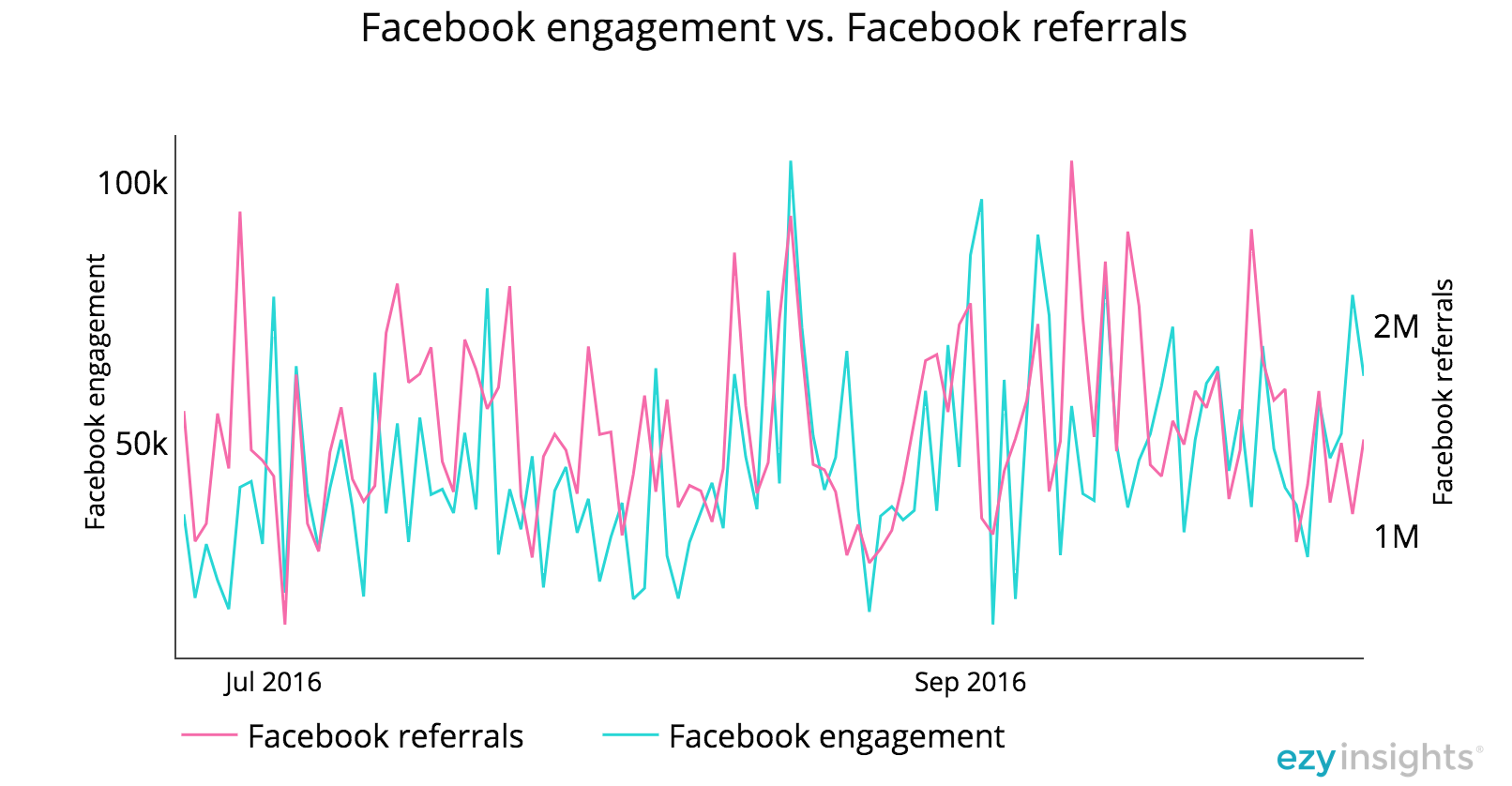
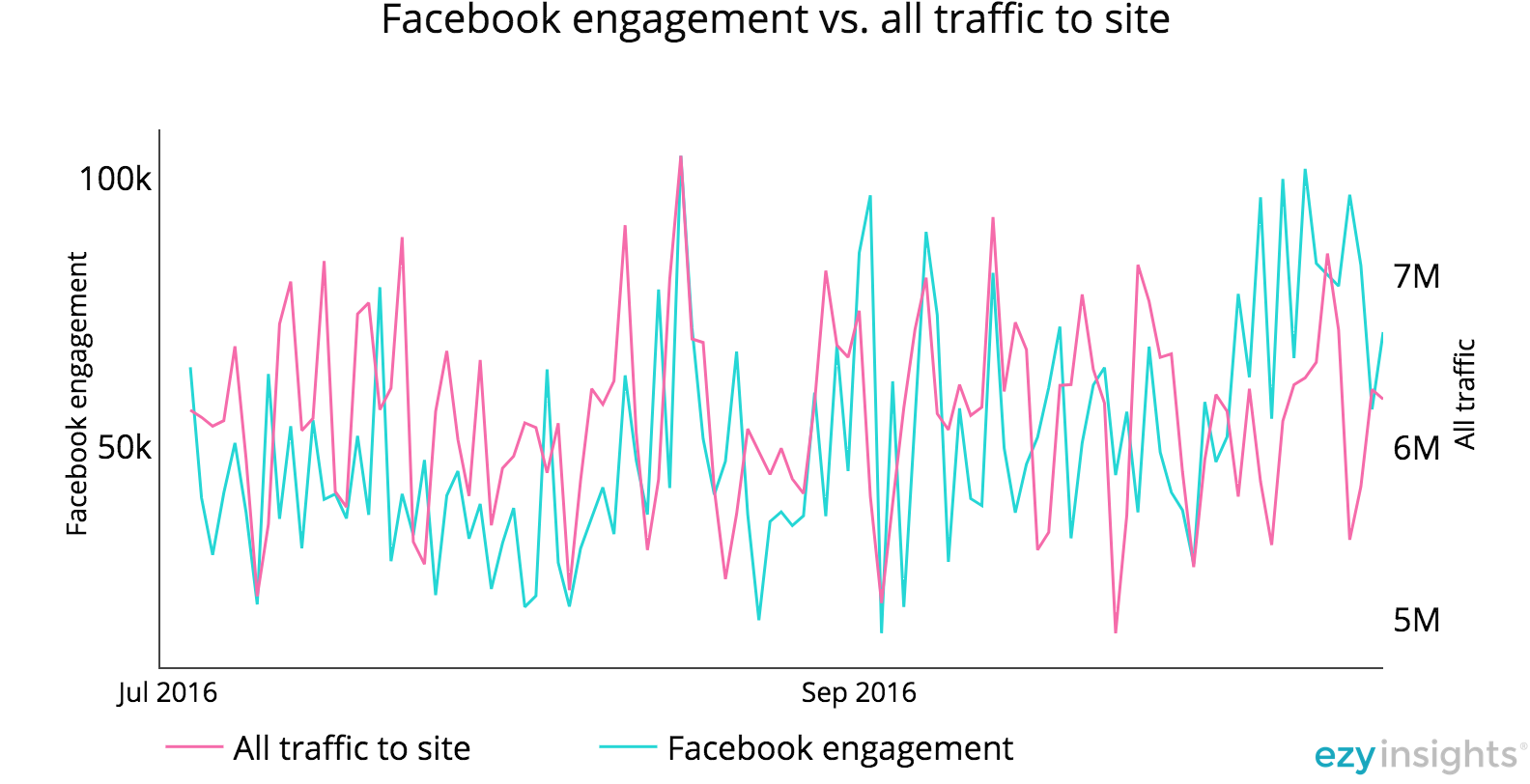
Also Facebook engagement and reach are highly correlated. They can have nearly identical patterns, as seen in the chart below. The correlation between Facebook engagement and reach is 0.4.
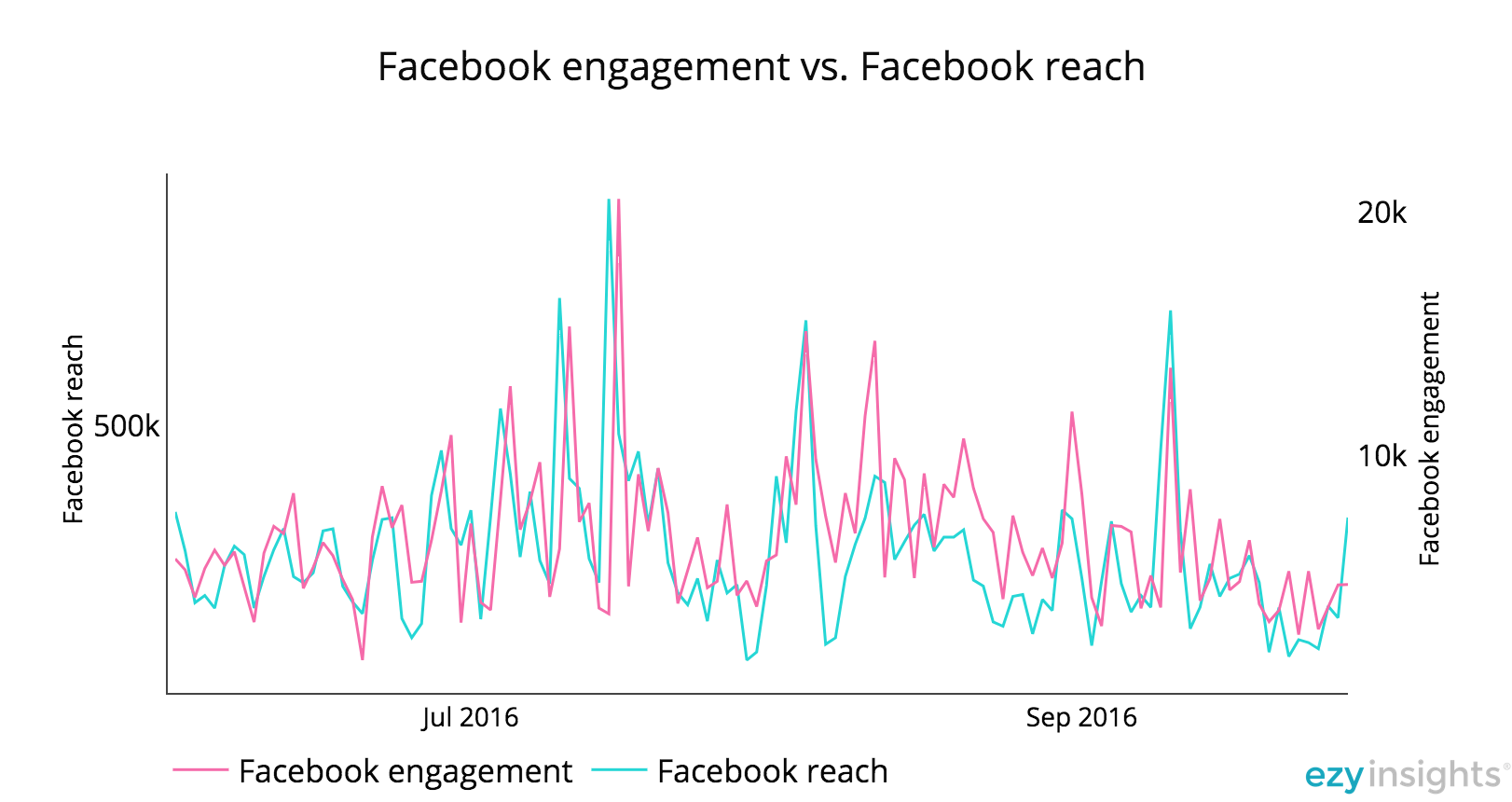
Finally, Facebook referrals’ engagements’ and link clicks’ patterns clearly follows each other, even though correlation is smaller, 0.2.
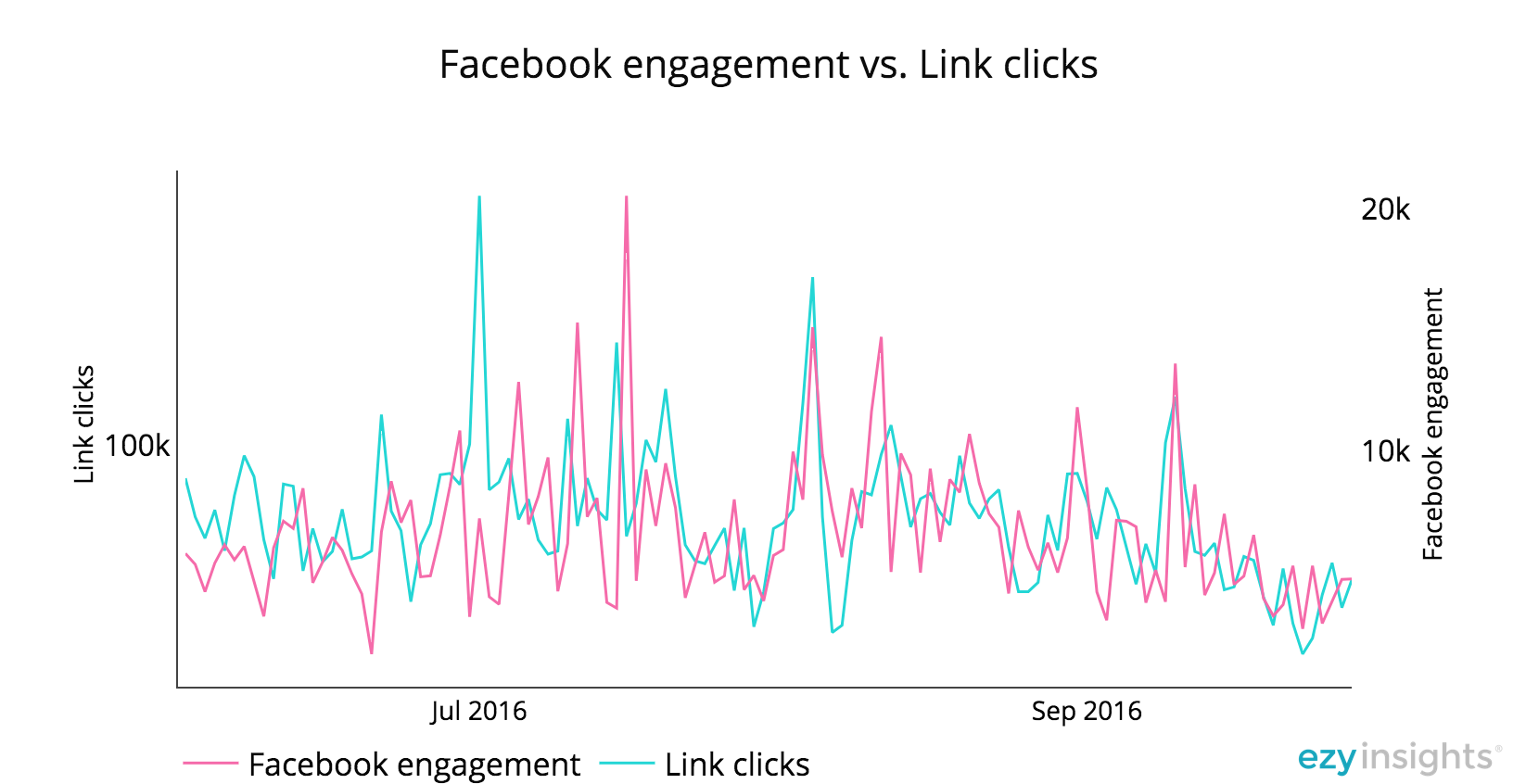
The correlation is not as high as with reach, because there are some places where rises and drops go to opposite directions. But we can see from the curves how faithfully the spikes and drops follow each other.
What does this mean?
Facebook engagement, reach and link click patterns reflect each other closely.
More engagement equals more reach, and more reach equals more clicks to the site. This is important to keep in mind when planning the Facebook publishing strategy for new websites and their respective Facebook pages.
These similarities also tell a new story of the importance of Facebook as a news platform:
Facebook is not only taking its toll on news publishing – it leads your readers to your content. It provides visibility and possibilities to build new forms of audience engagement, which can be very inspiring if you are curious to experiment new techniques in light of data.
